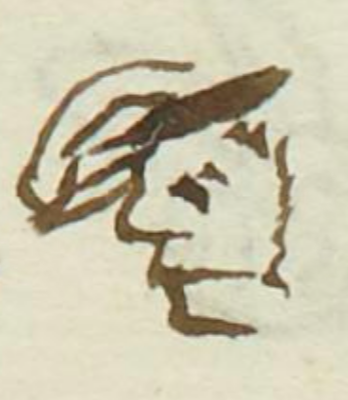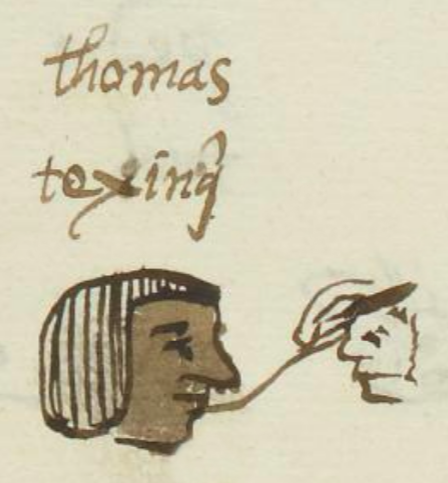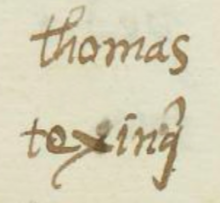Texinqui (MH509r)
This black-line drawing of the simplex glyph for the personal name (or occupation), Texinqui ("He Who Shaves People" or "He Who Cuts People's Hair", i.e., Barber), is attested here as a man's name. The glyph shows a man's head in profile facing toward the viewer's left. A hand above this head holds a stone (tetl) in the form of an obsidian blade or flint knife, and the hand appears to be cutting the hair or shaving (xima) the head of the man pictured. The suffix (-qui) is not shown visually.
Stephanie Wood
Other examples of texinqui tend to show hatchets, such as those for chopping wood or even carving stone (see below). But for cutting hair or shaving a head, that would be overkill. Hence the obsidian blade.
thomas
Texinq~
Tomás Texinqui
Stephanie Wood
1560
blades, shaver, hands, manos, cuchillos, navajas, obsidiana, obsidian, hair, cabellos, nombres de hombres

texinqui, barber, woodcutter, sculptor, https://nahuatl.wired-humanities.org/content/texinqui
te(tl), stone, https://nahuatl.wired-humanities.org/content/tetl-0
xima, to shave, https://nahuatl.wired-humanities.org/content/xima
-qui, one who does that thing, https://nahuatl.wired-humanities.org/content/qui-1
El Peluquero
Stephanie Wood
Matrícula de Huexotzinco, folio 509r, World Digital Library, https://www.loc.gov/resource/gdcwdl.wdl_15282/?sp=97&st=image
This manuscript is hosted by the Library of Congress and the World Digital Library; used here with the Creative Commons, “Attribution-NonCommercial-ShareAlike 3.0 License” (CC-BY-NC-SAq 3.0).




